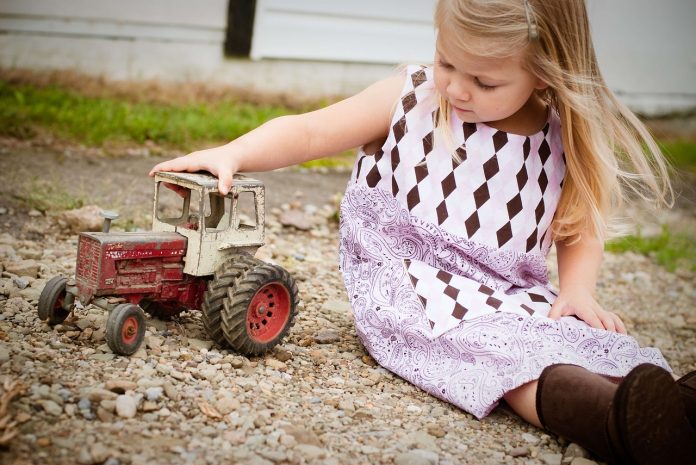School is out for summer, but learning never stops. Here are 14 activities to teach kids about Ag:
- Count worms. Earthworms thrive in healthy soil. Kids can count how many worms are present in 1 square foot of soil to determine soil health. Measure and mark 1 square foot of ground in your back yard. Dig 1 foot deep. Moving displaced soil onto newspaper. Count the number of worms in the pile. More than 10 worms suggest soil is healthy, less than 10 worms may mean soil lacks organic matter.
- Plant popcorn and pop it for movie night. Growing popcorn is easy. There are several varieties well-suited for the home garden; Strawberry popcorn and smoke signals are colorful varieties that wow kids. Plant popcorn in May to harvest in fall. Dry ears completely before popping the kernels.
- Save watermelon seeds. Kids love to spit watermelon seeds. They’ll love growing watermelon as much! After eating watermelon, collect seeds in a cup. Rinse seeds well, and spread them on a paper plate to dry for several days. Store seed in a labeled envelope and place the envelope in an airtight container until it’s time to plant. Plant watermelon in May to harvest in late summer.
- Sample apple varieties. More than 100 apple varieties are grown commercially in the United States. Purchase several varieties from the local orchard or grocery store and sample each variety, noting their unique colors, textures and flavors.
- Plant a tree. Agroforestry combines trees, crops and/or livestock on a plot of land. Benefits include shade for animals, clean air, windbreaks, improved biodiversity and soil and water protection. Plant a tree and discuss how trees help farmers and the environment.
- Picnic with pollinators. Bees, butterflies, insects and birds are valuable crop pollinators. Thirty-five food crops depend on pollinators to reproduce. Serve kids’ favorite foods that require pollinators — melons, strawberries, carrots, cucumbers — at an outdoor picnic. Talk about pollinators’ role in food production and watch for pollinator guests.
- Eat an Ohio Ag breakfast. Wheat, eggs, hogs and dairy products are among Ohio’s top ten agricultural products. Kids can help prepare a pancake breakfast with sides of scrambled eggs and bacon. Enjoy an Ohio Ag breakfast and conversation about where food comes from.
- Test soil texture. Soil texture is important to farmers because it affects tilth, and the ground’s ability to maintain moisture and nutrients. Teach kids about the three basic soil types. Place ½ cup of soil in a mason jar with a lid. Add water to the top of the jar and shake vigorously. Set the jar aside and allow the soil to settle for several hours. Soil particles will separate into layers. Sand is the largest, heaviest particle. It will sink to the bottom of the jar. Silt will form a middle layer. Clay has the smallest particles and absorbs the most water, it will collect at the top.
- Grow a container garden. Give kids a garden all their own! Growing food in containers teaches kids about food production and basic plant care. Small and mini vegetable varieties like mini zucchini, cherry tomatoes and bush pea plants grow well in containers.
- Go to the fair. The county fair is a one stop shop to teach kids about Ag. Watch a tractor pull, walk through the livestock barns, and check out the colorful produce on display from local farmers and backyard growers. Find your fair on The Ohio Department of Agriculture website or check out the Farm and Dairy’s 2017 Fair Schedule.
- Potato phototropism. Phototropism is plant growth in response to light. Use a potato to teach kids how plants seek sunlight. Allow a potato to sprout. Cut a one-inch hole in the end of a shoebox. Put the potato at the other end of the box. Place a tight fitting lid on the box so that light does not shine through. Set the box on a windowsill with the hole facing the light. Remove the lid after one to two weeks. The potato sprouts will have grown towards the light.
- Visit a U-Pick berry operation and make shortcake for dessert. Find a berry U-Pick near you at PickYourOwn.org. Kids can make strawberry shortcake for the family, assembling store-bought or homemade shortcakes with fresh berries and whipped cream. Savor the flavor and the memory of a fun field trip to a local farm.
- Seed germination. Germination is the sprouting of a seed. Seeds require the right temperature, moisture, air, and light conditions in order to germinate. Purchase a packet of radish or broccoli seeds. Place a damp paper towel on a plate, spread seeds on towel and top with a second damp paper towel. Keep the paper towels moist for 5 to 7 days. Check seeds daily for sprouts.
- Plant pumpkins to carve for Halloween. Kids get a kick out of planting pumpkins, watching them grow and carving homegrown jack ‘o’ lanterns for Halloween. Plant pumpkins in May so they are ready to harvest by October.











